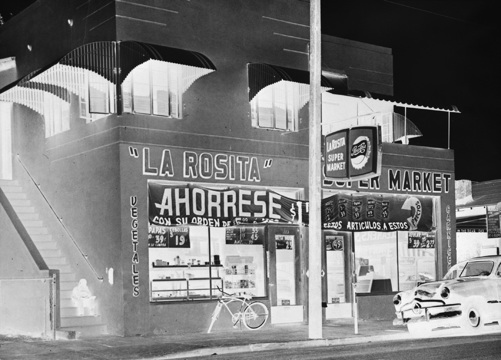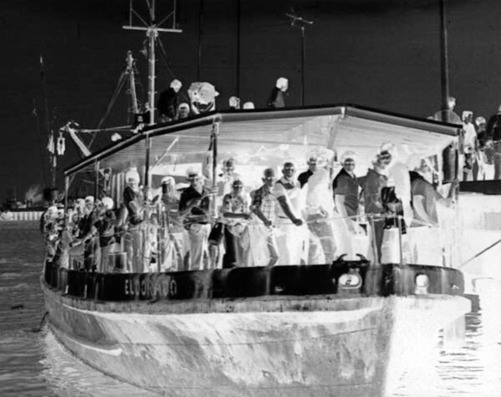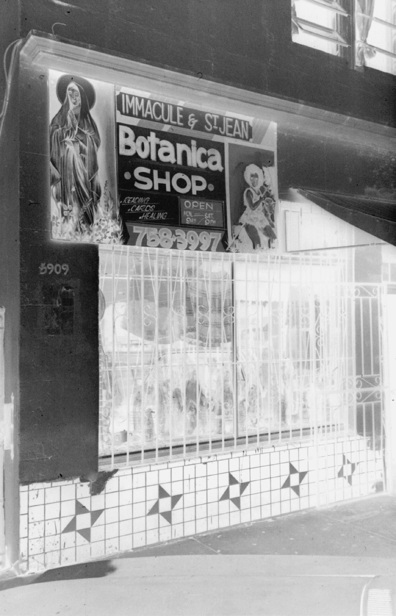The History of Florida (101 page)
Read The History of Florida Online
Authors: Michael Gannon
Tags: #History, #United States, #State & Local, #Americas

problems. Humanitarian considerations had little to do with the Cuban mi-
gration on either side. Rather, as one recent Cuban American scholar has
suggested, “the refugees became a prime weapon in the political war be-
tween the United States and Cuba,” and Miami became a “front line in the
Cold War.”8
proof
The great exodus of Cuban exiles to Florida reflected disenchantment
with the outcome of the Cuban Revolution. The earliest exiles were ideo-
logical opponents of Castro, primarily the business and professional elite
unhappy about the expropriation of property and the redistribution of
wealth in socialist Cuba. Later exiles mostly had initial y supported the Cu-
ban Revolution, but pragmatic experience in the new Cuba had eroded their
revolutionary zeal. Federal policy opened the gates to the early anticommu-
nist Cuban exiles, who entered the United States unhindered by immigra-
tion quotas or other restrictions. Most of these Cuban newcomers entered
the United States through Miami, which became one of the nation’s chief
immigration ports after 1959.
In 1960, the federal government established a Cuban Refugee Program
and a Refugee Emergency Center in Miami to handle the processing and
resettlement of exile Cubans. These agencies provided exiles with an un-
precedented variety of social services, educational programs, medical assis-
tance, and job training. By the mid-1970s, more than $1.3 billion had been
spent by the federal government to assist Cuban resettlement in the United
States. The refugee center also coordinated private aid from numerous reli-
gious and voluntary agencies, such as the Catholic Diocese of Miami, which
Immigration and Ethnicity in Florida History · 483
played an important role in Cuban refugee assistance and resettlement. Tens
of thousands of Cuban exiles were resettled throughout the United States,
but a large number eventual y returned to the Miami area. By the 1980s,
more than 60 percent of all the Cubans in the United States resided in south
Florida.
The arrival of the Cuban exiles in the 1960s initiated several decades of
remarkable economic, political, and social change in south Florida. Given
the professional and business backgrounds of first-wave exiles, the enor-
mous amount of resettlement assistance they received, and their concen-
tration in a single urban region, it is not real y surprising that the Cubans
adjusted wel and prospered in their new home. They created a thriving
ethnic community and carved out concentrated residential space in Mi-
ami’s Little Havana, in Hialeah, and in other sections of metro Miami. After
an initial period of adjustment, the initial wave of Florida Cubans gener-
al y became successful economical y, creating an enclave economy that
encouraged Spanish-language maintenance and provided jobs for a steady
succession of Cuban newcomers. Later Cuban arrivals may not have been
as successful, but statistical evidence gathered by the U.S. Census Bureau
demonstrated that Cubans as a group have more education, better jobs, and
higher incomes than the U.S. Hispanic population general y. The Cuban
proof
exiles and their Latin American connections sustained the emergence of
Miami in the 1980s as a global city heavily reliant on international banking,
trade, and tourism. On the downside, black Miamians consistently blamed
Cuban exiles for displacing blacks in the local labor market and “taking
over” the Miami-Dade County economy.
Florida’s Cuban exiles adjusted to life in the United States, but they also
held tenaciously to old-country language, culture, customs, religion, and
foodways, even across several generations. Periodic political controver-
sies in south Florida over immigration, bilingualism, and ethnic political
power heightened the Cubans’ sense of identity and the determination that
language, culture, and community should be nurtured and defended. Sec-
ond- and third-generation Cuban-Americans seemed to assimilate more
quickly, but the constant infusion over time of new waves of Cuban exiles
(such as with the 1980 Mariel boatlift that brought 125,000 newcomers to
south Florida, as well as later waves of rafters) strengthened Cuban cultural
maintenance. In Miami-Dade County, where the 2010 census reported the
population to be 51.1 percent foreign-born, 65 percent Hispanic, and 71.9
percent non-English-speaking at home, the Cuban exile migration had an
enormous cumulative impact over five decades.

484 · Raymond A. Mohl and George E. Pozzetta
Cuban exiles began arriving in Miami in 1959. They quickly carved out residential space
just west of the city’s central business district, while also establishing new cultural in-
stitutions and new businesses such as this “Little Havana” grocery store in a 1961 photo.
Courtesy of the State Archives of Florida,
Florida Memory
, http://floridamemory.com/
proof
items/show/34744.
Since the 1970s, immigrant Cubans increasingly shared exile space in
Florida with a growing refugee community of Haitians. Political repression,
violence, and poverty in Haiti over several decades triggered a huge exile
migration to Florida from that beleaguered Caribbean island. The rise of
Francois “Papa Doc” Duvalier to power in Haiti in 1957 stimulated an early
exodus of the country’s professional and business elites, mostly to New York
City, Montreal, and a few other northeastern cities. Metro Miami’s Haitian
community was initial y quite smal ; the 1960 census reported only a few
hundred Haitians living in Miami-Dade County. However, Haitian exile pat-
terns changed dramatical y by the mid-1970s, as Haiti’s urban workers and
rural peasantry began an exodus of their own to the United States, mostly
in clandestine fashion by small boat, either directly to Florida or by way of
the Bahamas, where tens of thousands of Haitians temporarily settled. The
magnitude of this Haitian exile migration first was brought home to Florid-
ians in 1980, when more than 25,000 Haitian boat people washed up on
south Florida beaches, a desperate migration that occurred simultaneously

Immigration and Ethnicity in Florida History · 485
with the Mariel boatlift. The parallel nature of the Haitian and Cuban exile
migrations focused attention on the important place of Florida in the politi-
cal economy of the Caribbean.
Federal policy on Haitian exiles has been controversial. Haitian newcom-
ers received a less than enthusiastic welcome, especial y when compared to
the treatment accorded Cuban exiles. U.S. policy general y rejected Hai-
tian appeals for political asylum. The U.S. Immigration and Naturalization
Service (INS) sought to return the exiles to Haiti, interdict them at sea, or
discourage their departure from Haiti. During the 1980s, the INS official y
confined thousands of Haitian exiles at the Krome Refugee Center west of
Miami; after awaiting deportation hearings, most were returned to Haiti.
A new crisis emerged in the 1990s, when the United States detained tens of
thousands of interdicted Haitians at the U.S. naval base in Guantanamo Bay,
Cuba, before sending them back to Haiti, where they faced punishment or
retribution. By contrast, Cuban exiles who arrived in the United States went
free immediately under provisions of the Cuban Adjustment Act (1966),
proof
In 1980, the Mariel boatlift brought 125,000 new Cuban exiles to south Florida. They
crowded onto hundreds of vessels such as the
El Dorado
in their quest for a new life
in the United States. Courtesy of the State Archives of Florida,
Florida Memory
, http://
floridamemory.com/items/show/98693.
486 · Raymond A. Mohl and George E. Pozzetta
which granted them permanent resident alien status. To this day, Congress
and federal immigration authorities have failed to resolve the double stan-
dard in American immigration policy—one that welcomed mostly white
exiles from Cuba but rejected black refugees from Haiti.
The ongoing immigration of Haitian exiles reshaped once again the resi-
dential and ethnic structure of south Florida. Initial y, Haitians settled heav-
ily in the Edison–Little River section of Miami, an older, inner-city residen-
tial area soon labeled “Little Haiti.” By the 1990s, Haitians also began moving
into North Miami and then into Broward and Palm Beach Counties, mostly
into a corridor of older, low-income residential neighborhoods stretching
along Interstate 95. Thus, substantial Haitian communities emerged in Fort
Lauderdale, Pompano Beach, Delray Beach, Boynton Beach, Lake Worth,
West Palm Beach, and Riviera Beach, as well as in agricultural communities
such as Pahokee, Belle Glade, and South Bay on Lake Okeechobee. Accord-
ing the U.S. Census Bureau, in 2009 some 376,000 Haitians and Haitian
Americans resided in Florida, most in south Florida’s three large urban
counties.
In Florida, Haitian newcomers confronted the traditional immigrant
task of adjustment and accommodation. Lacking the self-sufficient enclave
economy of Cuban exiles, many Haitians entered the low end of the labor
proof
market, mainly in marginal service jobs and unskilled work in construction
and landscaping; others participated in a local underground economy of
car repair and handyman home-maintenance work. Florida’s Haitians also
built new ethnic communities with important institutional and cultural at-
tributes. Pre-migration Haitian culture remained a powerful ingredient of
community life. Haitian dress, food, music, and art prevailed in Miami’s
Little Haiti and in other Haitian communities. Frequent festivals and cel-
ebrations perpetuated the homeland flavor. The extended family structure
served important functions, ranging from facilitating the chain migration
process to providing job recruitment for new arrivals. Haitian Catholic
parishes, with French- and Creole-speaking priests, provided a form of
religious continuity. Haitians mixed organized religion with folk religion
of African origins cal ed voodoo—a mélange of music, magic, ceremony,
ritual, natural medicine, and animal sacrifice that became an indelible part
of Haitian immigrant culture. A powerful brand of exile politics testified to
intense interest in the fate of their homeland, even as growing numbers of
Haitians became U.S. citizens and voters.
Another large Florida exile community emerged after Nicaragua’s Sand-
inista revolutionaries overthrew dictator Anastasio Somoza in 1979. By the
